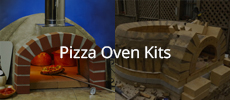As a completely "unknowledgeable person" on the topic of brick. Here is my opinion why soldier course might be used.
Standing them on edge, with the thin face pointed inwards makes it very easy to make a rounded shape.
If splits are 1/2 thickness brick; then they would produce even a smoother arch.
Cast the normal soldier course area from refractory castable--then wait for it to break wherever it pleases, then blame it on shrinkage!







Leave a comment: